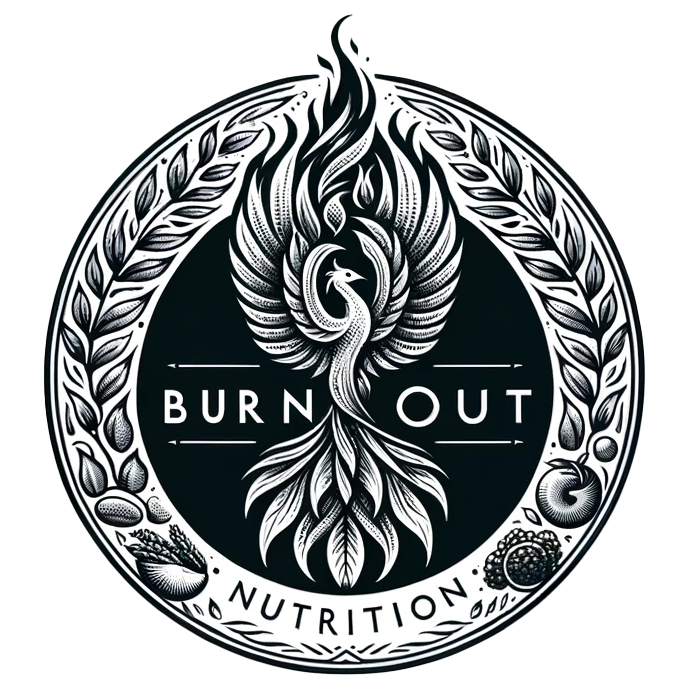Achieving the right balance of carbohydrates, proteins, and fats is crucial for managing energy levels and symptoms in individuals with Chronic Fatigue Syndrome/Myalgic Encephalomyelitis (CFS/ME). Here’s a quick overview:
Macronutrient Ratios for CFS/ME
| Macronutrient | Suggested Ratio |
|---|---|
| Protein | 20-30% |
| Carbohydrates | 30-40% |
| Fats | 30-50% |
- Higher protein helps maintain muscle and support energy
- Moderate carbs provide steady energy without spikes
- Healthy fats aid hormone balance and reduce inflammation
Key Points
- Choose complex carbs from whole foods like fruits, veggies, and whole grains
- Include lean proteins like poultry, fish, eggs, legumes, and nuts
- Opt for healthy fats like avocados, nuts, seeds, and fatty fish
- Plan balanced meals with carbs, protein, and fats to keep energy steady
- Track macronutrient intake and adjust ratios based on your energy levels
Foods to Focus On
- Polyphenol-rich: Dark chocolate, berries, green tea, legumes
- Fruits and veggies: Leafy greens, orange-colored options, berries
- Whole grains: Brown rice, quinoa, oats
- Lean proteins: Fish, seafood, tofu, tempeh
- Healthy fats: Olive oil, avocados, nuts, seeds
- Fermented dairy: Yogurt, kefir
Achieving the right macronutrient balance takes time and consistency. Work with a healthcare professional to find the ideal ratios and food choices for managing your CFS/ME symptoms and energy levels.
Related video from YouTube
Understanding Your Energy Needs
Energy needs can differ for people with CFS/ME based on several factors:
- Activity Level: More active people need more calories and nutrients.
- Body Composition: Muscle burns more calories than fat, so those with more muscle may need more energy.
- Metabolic Rate: Age, gender, and genetics affect how many calories you burn at rest.
- Severity of CFS/ME: Those with severe symptoms may need fewer calories due to less activity.
It’s important to work with a healthcare professional or dietitian to find out your specific energy needs. They can give you personalized advice on how many calories and nutrients you need.
Some people may need to eat less on low-energy days, while others might need more calories to avoid fatigue or weight loss. The goal is to find the right balance for your body.
1. Calculating Macronutrient Ratios
Finding the right macronutrient ratios is important for managing energy levels with CFS/ME. The right mix of carbohydrates, proteins, and fats can help keep your energy steady.
General Guidelines
Here are typical macronutrient ratio recommendations for energy balance:
| Macronutrient | Percentage Range |
|---|---|
| Carbohydrates | 45-65% |
| Protein | 10-35% |
| Fats | 20-35% |
These ranges are general guidelines. Your needs may vary based on activity level, body composition, and metabolic rate.
Ratios for CFS/ME
For those with CFS/ME, some adjustments might help:
| Macronutrient | Suggested Ratio |
|---|---|
| Protein | 20-30% |
| Carbohydrates | 30-40% |
| Fats | 30-50% |
Higher protein can help maintain muscle and support energy. Moderate carbs provide steady energy without spikes. Healthy fats are key for hormone balance and reducing inflammation.
Online Calculators
You can use online tools to find your personalized macronutrient ratios:
These tools consider factors like age, gender, activity level, and weight goals to give you tailored macronutrient targets.
2. Choosing Healthy Foods
Selecting nutrient-dense, whole foods is key for maintaining energy levels with CFS/ME. Focus on a variety of healthy carbohydrates, proteins, and fats.
Carbohydrates
Choose complex carbohydrates for steady energy and fiber:
- Whole grains: brown rice, quinoa, oats
- Starchy vegetables: sweet potatoes, squash
- Fruits: berries, apples, oranges
Limit simple carbs like white bread, pastries, and sugary drinks, as they can cause energy crashes.
Proteins
Include a variety of complete proteins:
- Lean meats: chicken, turkey, lean beef
- Fish and seafood: salmon, tuna, shrimp
- Eggs
- Dairy: Greek yogurt, cottage cheese
- Legumes: lentils, chickpeas, black beans
- Soy products: tofu, tempeh, edamame
Fats
Healthy fats help reduce inflammation and support hormone balance:
- Avocados
- Nuts and seeds: almonds, walnuts, chia seeds
- Olive oil
- Fatty fish: salmon, mackerel, sardines
- Coconut oil
Limit saturated fats from processed meats, fried foods, and baked goods, as they can worsen inflammation.
sbb-itb-cf04d29
3. Meal Planning and Prep
Daily Meal Structure
To keep your energy steady, aim for three balanced meals and two snacks each day. Each meal should include complex carbs, lean proteins, and healthy fats. Here’s a sample meal plan:
| Meal | Example |
|---|---|
| Breakfast | Oatmeal with berries, Greek yogurt, and sliced almonds |
| Snack | Apple with peanut butter |
| Lunch | Grilled chicken salad with quinoa, avocado, and olive oil dressing |
| Snack | Hummus with carrot and cucumber sticks |
| Dinner | Baked salmon with roasted sweet potatoes and steamed broccoli |
Batch Cooking Tips
Batch cooking can save time and energy. Here are some tips:
- Cook extra portions of proteins like chicken, ground turkey, or lentils, and freeze the extras.
- Prepare large batches of whole grains like brown rice or quinoa to reheat quickly.
- Roast a tray of vegetables like sweet potatoes, Brussels sprouts, and bell peppers for the week.
- Make a large pot of soup or chili and freeze individual portions for easy reheating.
Meal Prep Tools
Investing in meal prep tools can make the process easier:
- Bento boxes or compartment containers: Portion out balanced meals for grab-and-go convenience.
- Slow cooker or Instant Pot: Prepare hands-off meals like stews, soups, and shredded meats.
- Food storage containers: Store pre-portioned meals, snacks, and ingredients for easy access.
- Blender or food processor: Quickly prepare smoothies, dips, and sauces for added nutrients and flavor.
4. Tracking and Adjusting
Tracking Tools
Using a food journal or a tracking app can help you monitor your macronutrient intake. Popular apps include:
- MyFitnessPal
- Cronometer
- LoseIt
These apps let you log your meals and snacks, showing detailed breakdowns of carbs, protein, and fat.
Analyzing Data
Review your tracking data regularly to spot patterns. Look for days when your energy levels were higher or lower and see how they match your macronutrient ratios. Notice how different foods and meal combinations affect your symptoms. Over time, you’ll learn what works best for managing your CFS/ME.
Making Adjustments
Adjusting your macronutrient ratios takes some trial and error. If you notice a drop in energy, try increasing your complex carbs or reducing your fat intake slightly. If you feel sluggish, consider boosting your protein or healthy fats. Make gradual changes and give your body time to respond. Keep tracking your adjustments and their effects to find the right balance for you.
5. Supplements for CFS/ME
People with Chronic Fatigue Syndrome/Myalgic Encephalomyelitis (CFS/ME) often have nutritional deficiencies that can worsen symptoms like fatigue, brain fog, and muscle pain. Supplements can help replenish essential nutrients and support managing CFS/ME. Always consult a healthcare professional before starting any supplements, as they can interact with medications or have side effects.
Common Supplements
Here are some supplements that may help individuals with CFS/ME:
| Supplement | Benefits |
|---|---|
| Vitamin B12 | Helps reduce fatigue and improve cognitive function. |
| Vitamin D | Corrects deficiencies and supports overall health. |
| Omega-3 Fatty Acids | Reduces muscle pain and fatigue. |
| Coenzyme Q10 (CoQ10) | Supports energy production and improves fatigue. |
| Magnesium | Reduces fatigue, muscle pain, and headaches. |
| D-Ribose | Helps replenish energy levels. |
| Ashwagandha | Reduces stress and fatigue. |
Consulting Professionals
Before starting any supplements, consult with a healthcare professional. They can:
- Determine which supplements are right for you.
- Ensure supplements don’t interact with your medications.
- Recommend appropriate dosages.
- Monitor for side effects.
Choose high-quality supplements from reputable brands and follow the recommended dosages and usage instructions carefully.
Conclusion
Maintaining a balanced intake of macronutrients is key for managing energy levels in individuals with Chronic Fatigue Syndrome/Myalgic Encephalomyelitis (CFS/ME). By calculating the right ratios of carbohydrates, proteins, and fats, and choosing nutrient-rich foods, you can help your body fight fatigue and improve overall well-being.
Be patient and consistent with dietary changes. Finding the best macronutrient balance for your needs may take some trial and error. Track your energy levels, symptoms, and health while adjusting your macronutrient ratios and food choices. Small, sustainable changes are often more effective than drastic shifts.
Consulting with a healthcare professional, such as a dietitian or nutritionist, can help tailor a meal plan to your specific needs. They can provide personalized advice, address nutrient deficiencies, and ensure your diet supports your management of CFS/ME.
Achieving macronutrient balance requires commitment and perseverance. By focusing on nutrient-dense, whole foods and maintaining a balanced intake of carbohydrates, proteins, and fats, you can support your body’s energy needs and potentially reduce some symptoms of CFS/ME.
FAQs
What foods are good for chronic fatigue syndrome?

Certain foods can help manage chronic fatigue syndrome (CFS/ME) symptoms. Here are some good options:
| Food Type | Examples |
|---|---|
| Polyphenol-rich foods | Dark chocolate, berries, green tea, legumes |
| Fruits and vegetables | Leafy greens, orange-colored options, berries |
| Whole grains | Brown rice, quinoa, oats |
| Lean proteins | Fish, seafood, tofu, tempeh |
| Healthy fats | Olive oil, avocados, nuts, seeds |
| Fermented dairy | Yogurt, kefir |
These foods provide vitamins, minerals, antioxidants, and other compounds that support energy levels and reduce inflammation associated with CFS/ME.
Related posts
- Mycotoxins & Chronic Fatigue Syndrome: Exploring the Connection
- 10 Nutrition Tips to Manage Chronic Fatigue Syndrome
- Probiotics for Chronic Fatigue & Gut Health: Benefits
- Top 8 Probiotic Strains for CFS/ME Symptom Relief






Leave a Reply